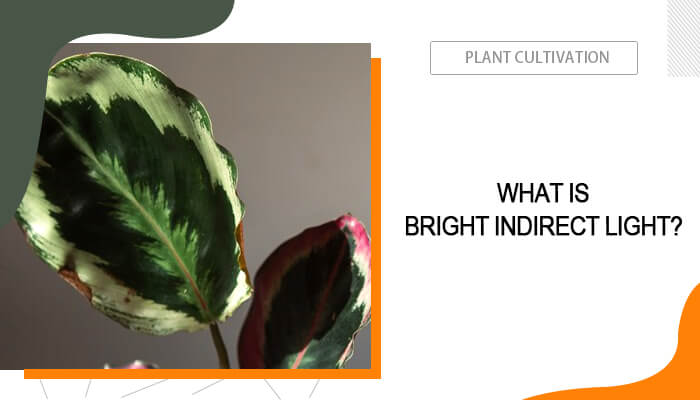What does bright indirect light mean? Bright indirect light and bright indirect light for plants is the right light condition for most houseplants. It means the light is in the middle ground with protection. In other words, the light is diffused or filtered and doesn't shine right on a plant. Think of it this way: soft, bright light, say, like you might see near a north-facing window or behind a thin curtain or under the cover of a tree. Such light is bright enough for photosynthesis but does not scorch tender leaves or cause overheating.
Table of Contents
How Many Lux is Bright Indirect Light?
Bright indirect light falls, usually, between 1,000 and 5,000 lux, which is the general suitability rating for most houseplants. The light of this intensity is always experienced under a shady tree or near a north-facing window.
Even though direct sunlight would go as high as 100,000 lux, bright indirect lighting gives just the right amount of energy for healthy growth without putting stress on the plant or burning delicate leaves. Therefore, it's essential to choose the right LED grow light wattage for your plants.
Bright Indirect Light Examples
You can tell your plant has bright indirect light by its growth. If it has green, lush growth and is growing well, then you are likely giving it enough light.
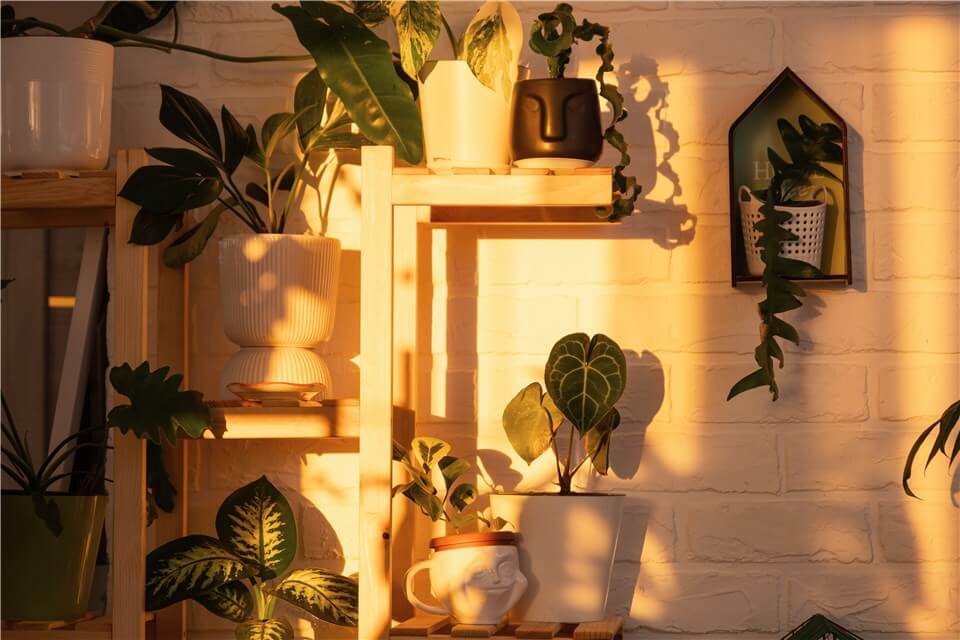
Bright Indirect Light Indoor Plants
Here are some examples of bright indirect light:
- Near a North-Facing Window: North-facing windows receive less direct sunlight, providing more diffused light.
- Behind a Sheer Curtain: Sunlight passes through the curtain, softening the intensity.
- Under a Tree Canopy: Sunlight is filtered through the leaves of trees, creating a dappled effect.
- Near a West-Facing Window in the Afternoon: The afternoon sun is less intense, and the light is often filtered by clouds.
Direct Vs Indirect Sunlight
Sunlight is essential to life on Earth, as it provides energy for plants and acts upon our climate.
However, the way sunlight reaches us can differ significantly, impacting its intensity and effects. Both direct and indirect sunlight have their advantages and disadvantages. Understanding the differences between them allows you to make informed decisions about your activities and the environment around you.
Hence, we’ll compare the differences and similarities of direct and indirect sunlight in this part:
|
Direct Sunlight |
Indirect Sunlight |
|
|---|---|---|
|
Definition |
Sunlight travels directly from the sun to a surface without being scattered or blocked by clouds, trees, or other objects. |
Sunlight is scattered or filtered by clouds, trees, or other objects, resulting in a softer, less intense light. |
|
Intensity |
Direct sunlight delivers the full force of the sun's rays, leading to higher temperatures and potential for sunburn. |
Indirect sunlight is less powerful than direct sunlight, leading to cooler temperatures and reduced risk of sunburn. |
|
Shadows |
Strong - objects cast sharp, well-defined shadows in direct sunlight. |
Diffused shadows - Objects cast softer, less defined shadows in indirect sunlight. |
|
Best for |
Plants thrive in direct sunlight, maximizing their energy production. |
Sensitive plants: Some plants prefer indirect sunlight, as it protects them from intense heat and scorching. |
How to Create Bright Indirect Light with Grow Lights?
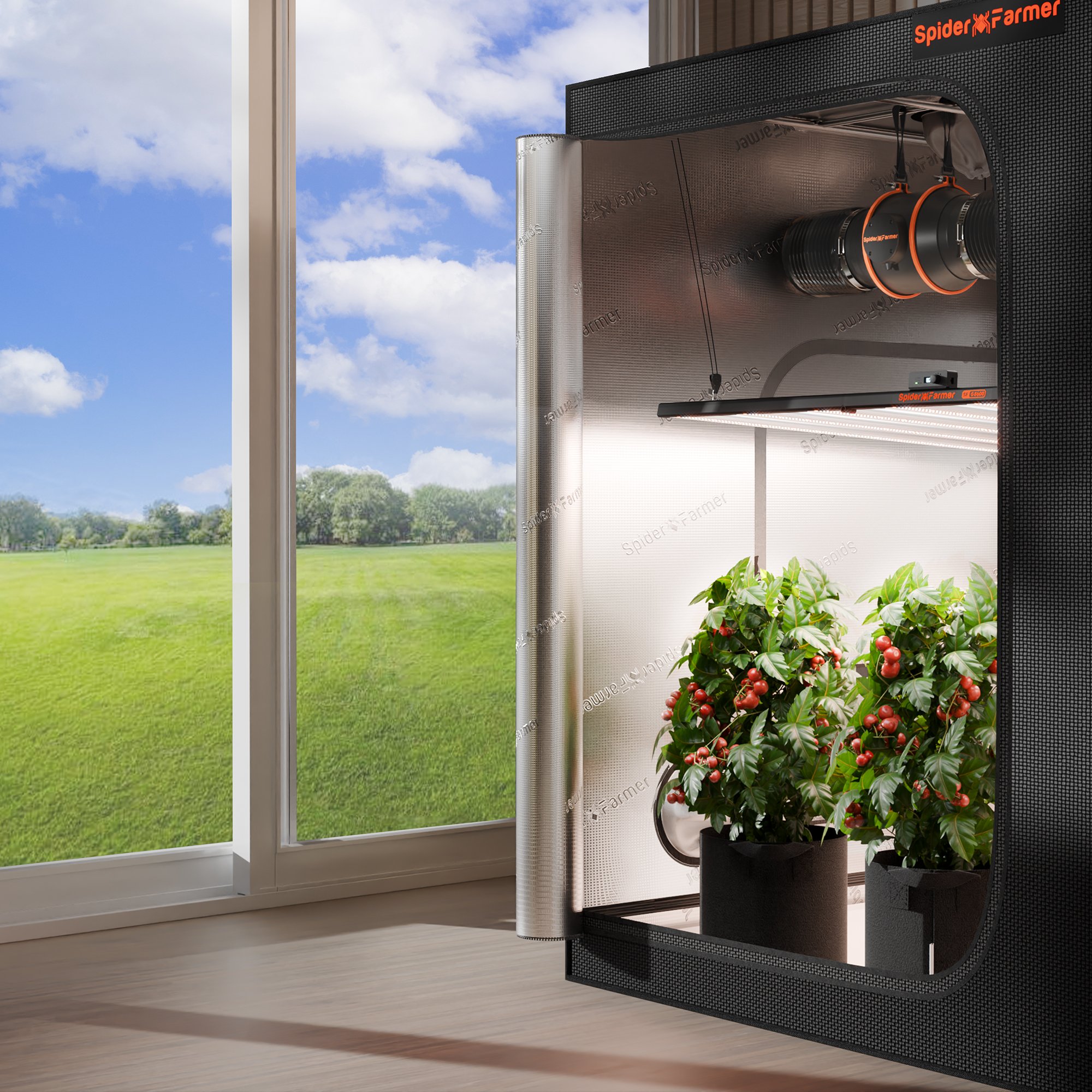
Spider Farmer LED Grow Lights
- Provides a wide range of light wavelengths for all growth stages, from seedling to bloom.
- Designed to consume less power while delivering high light output, often using Samsung diodes.
- Some models offer dimmable settings for customizable light intensity.
- Lightweight and easy to set up, often with hanging kits included.
Bright indirect light can bring lush greenery indoors. Bright indirect light grow light can easily mimic this.
What bright indirect light can bring to you:
- Mimics Natural Sunlight: Think of a shady spot under a tree – dappled, diffused light that’s strong but not scorching. That's bright indirect light, and it's the ideal environment for most houseplants.
- Promotes Healthy Growth: Bright indirect light encourages robust foliage, vibrant colors, and even blooming in some species.
- Reduces Stress: Harsh direct light can burn leaves and stunt growth. Bright indirect light provides the perfect balance of energy without causing damage.
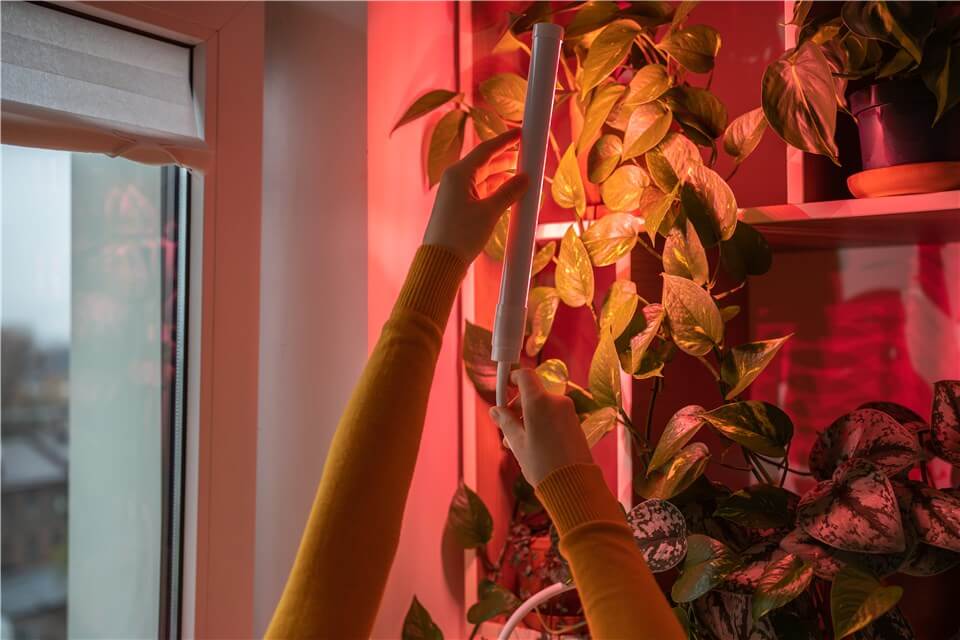
Create Bright Indirect Light with Grow Lights
Take the following steps to use grow lights and create bright indirect light with grow lights:
- Look for full-spectrum grow lights that mimic natural sunlight, offering a blend of red, blue, and white light.
- Position your grow lights 12-24 inches above your plants, ensuring even coverage. Avoid placing them directly above delicate leaves.
- Start with a lower light intensity and gradually increase it as your plants adjust. You can also use a dimmer switch to fine-tune the brightness.
- Use a timer to simulate natural daylight hours, typically 12-16 hours per day.
- Turn your plants regularly to ensure all sides receive equal light exposure.
Best Plants for Indirect Sunlight
By the end of the post, we'll explore some of the best plants for indirect light — highlighting their beauty, ease of care, and potential to transform your home into a vibrant indoor jungle. Whether you're a seasoned plant parent or a curious beginner, discover the joy of growing lush, thriving greenery in even the most dimly lit corners of your home.
For Beginners
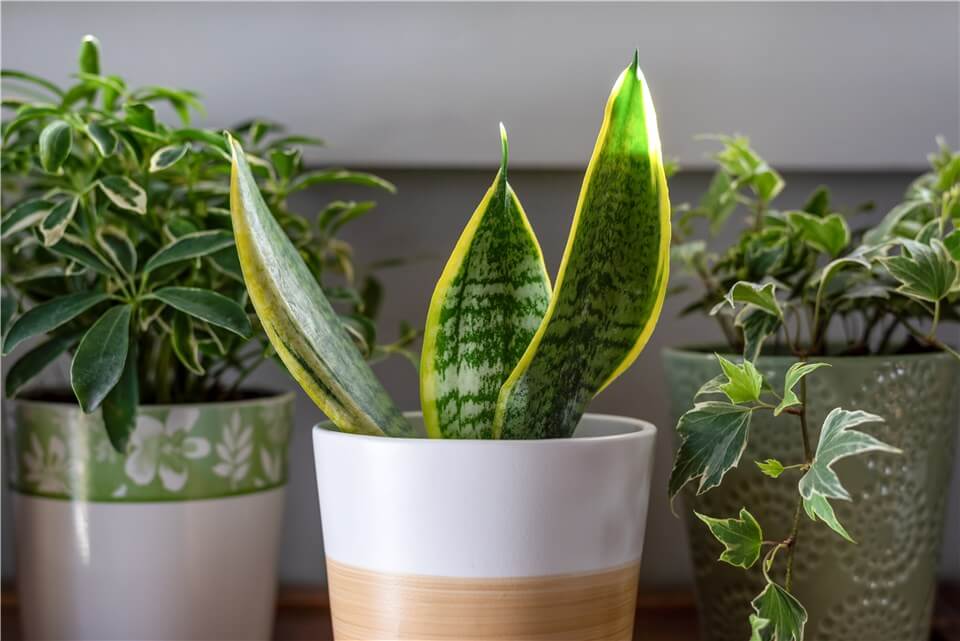
Bright Indirect Light for Snake Plant
- Snake Plant: The ultimate low-light champion when it comes to propagating snake plant. Snake plant comes in a variety of shapes and colors, from classic green to striking variegated varieties.
- ZZ Plant: Nearly indestructible, tolerating neglect and even drought. Its glossy, dark green foliage adds a touch of elegance.
- Peace Lily: Beautiful white blooms and lush foliage, plus it's an excellent air purifier.
- Cast Iron Plant: Live with the incredibly tough, tolerating low light, neglect, and even dry conditions.
For Foliage Lovers
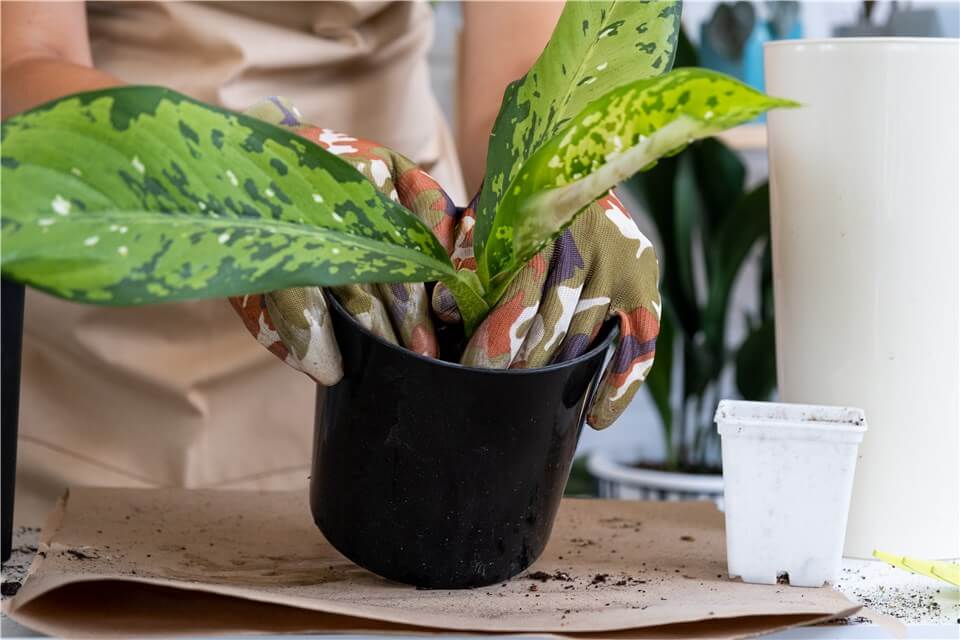
Bright Indirect Light for Chinese Evergreen
- Calathea: A showstopper with stunningly patterned leaves. The 'Prayer Plant' is also in this family, with leaves that fold up at night like praying hands.
- Chinese Evergreen: Comes in a rainbow of colors and patterns, adding a vibrant touch to any room. Easy to care for and forgiving.
- Pothos: A classic trailing vine with heart-shaped leaves can be grown in hanging baskets or allowed to climb. Hang LED lights from plants and let the leaves to capture indirect lights.
For a Touch of Bloom
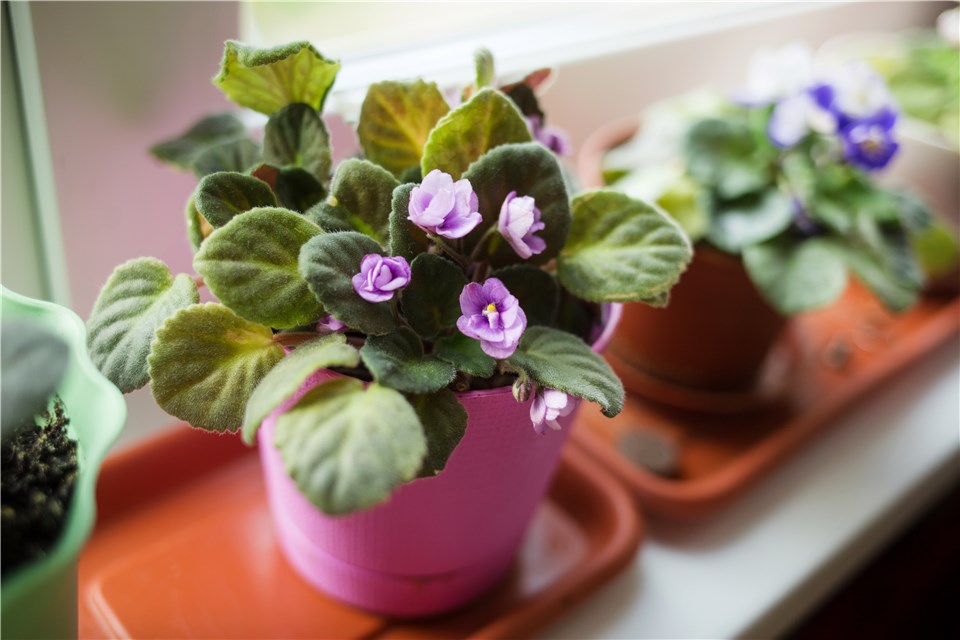
Bright Indirect Light for African Violet
- African Violet: Delicate and beautiful, producing vibrant blooms in a range of colors. They prefer slightly cooler temperatures and humidity.
- Anthurium: Known for their heart-shaped spathes (modified leaves) that surround the actual flowers. Comes in a variety of colors, from classic red to pink and white.
- Phalaenopsis Orchid: Elegant and long-lasting blooms, making them a popular choice. They require a bit more care than other plants on this list but are well worth the effort.
In Conclusion
Now, you’re able to maintain a lush, healthy indoor jungle by grasping the subtleties of bright indirect light. Remember, it’s not just about light levels; it’s also about setting the right conditions for your plants to thrive in.If you give that little bit of observation, research, and tender loving care, you can bring about an exceptionally large area filled with life and color for your green friends—a haven that has a feel of natural beauty oozing out from your house. Let the soft glow of indirect bright light just cradle you in its warmth, and then let that work magic on your plants!


